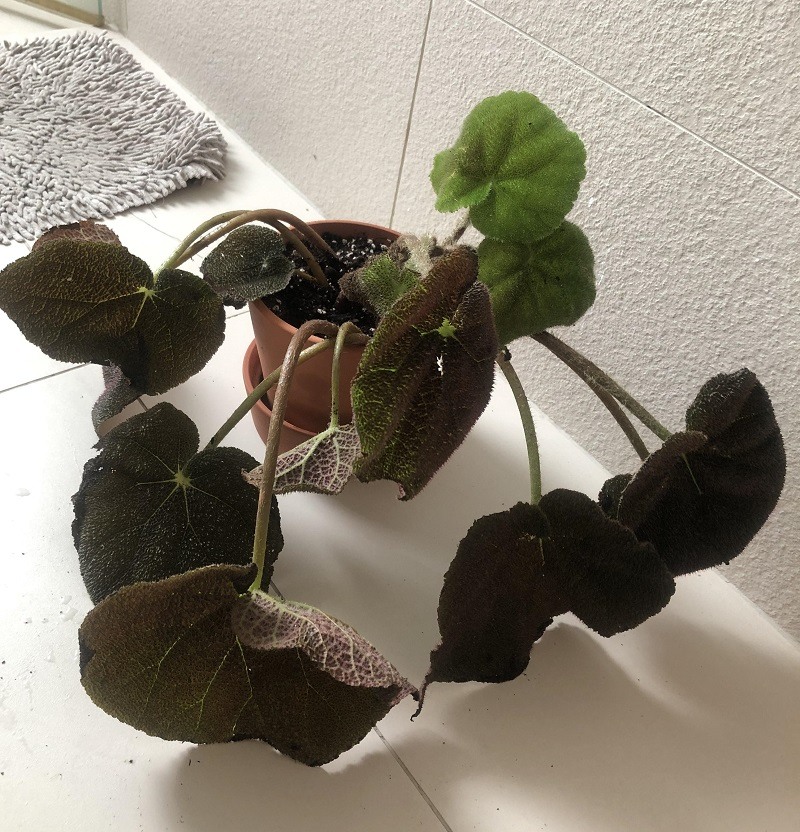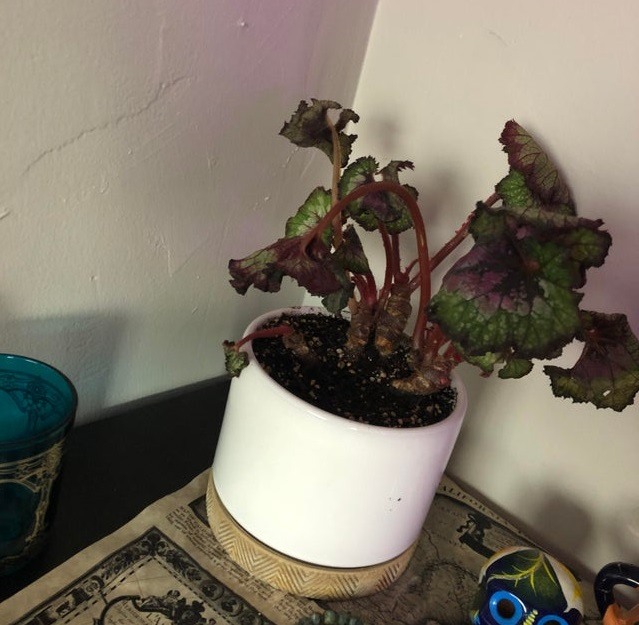Begonia is one of the most beautiful houseplants to consider adding to your collection. But the indoor plant can be challenging to grow and maintain. Begonias are less vulnerable to wilting and drooping.
So, why is my begonia wilting? Possible causes are inappropriate watering techniques, temperature stress, transplant shock, pests, low humidity, and diseases. Identifying the exact cause will help to save the houseplant from wilting.
Keep reading this article to learn how to identify the causes and tips for fixing a droopy begonia. You’ll also learn how to save a dying begonia regardless of your experience. Take the time to read from the start to the end.
You May Also Like: Why Is My Zebra Plant Leaves Drooping?

10 Causes of a Wilting Begonia and Their Solutions
Inconsistent Watering Habits
Most begonia varieties love soil with moderate moisture levels. Leaving the potting mix dry for an extended period will make your begonia start wilting.
Wax begonias can tolerate drought, unlike begonia rex and begonia maculate. The begonia species have features that can withstand extended periods of drought.
The best option is to dig down your index finger in the soil to test moisture level. If the soil is dry, it could be the reason behind wilting begonia.
Consider soaking the potting with plenty of water until it runs through the drainage holes. Add water little by little to prevent dry soil from repelling water.
The wilting begonia will be revived and be back to normal after a few weeks. Provide ultimate begonia care to reduce the risk associated with wilting.
Overwatered Begonia
Overwatering is the leading cause of death among begonia species. Most begonia varieties can tolerate drought for a few days and not overwatering.
A damp environment inhibits root aeration and this results in root rot. The root damages prevent water absorption leading to a wilting begonia.
Other signs of overwatering begonias are yellow leaves, drooping leaves, brown leaf tips, and edges. These symptoms make begonias look terrible.
Unpot the plant and examine the roots to check signs of root rot. Snip the affected roots with a sterilized scissor and replant them to a fresh potting mix. Develop a watering schedule for proper care.
Acclimation Issue
Begonias are more vulnerable to wilting when brought home. The sudden change in condition between the plant store and home could be the reason behind wilting.
The acclimation issue may make the roots cease functioning temporarily. Limited water absorption makes the succulent stems lose turgor pressure and begin to droop.
There is no exact treatment for acclimation. The best option is to provide ultimate begonia care and give the plant time to adjust to the new environment.
Temperature Stress
Begonias thrive under a temperature range of 59-74oF (15-24oC). The indoor temperature enhances the proper growth and well-being of the plant.
Temperature issue occurs when the plant is near heating appliances, draft windows, and air conditioning vent. The condition ends up stressing the plant and experience wilting.
Freezing temperatures may also cause similar damages to the houseplant. Any temperature above 85oF will encourage rapid water loss and result in begonia wilting.
We recommend installing a digital thermometer (Check Best Garden Thermometer Deals on Amazon) to help in detecting temperature change. Ensure the plant is kept away from drafts, heaters, and vents.
Transplant Shock
Begonias are more vulnerable to transplant shock. It would be best to exercise precautions when re-potting the houseplant. But transplant stress is inevitable and could be the cause of wilting.
The issue usually lasts for about 24-48 hours of re-potting. Be sure to optimize the indoor growing condition to foster proper growth and health.
Lack of Humidity
Begonias love a humid and warm environment. Dry air around the plant is responsible for the drooping and wilting issue.
Other minor signs of low humidity are brown leaf edges and tips. A combination of low humidity and under-watering may cause its death in the long run.
Maintain the indoor humidity at 40% to prevent your begonia from drooping and wilting. Buy a hygrometer (Best Garden Hygrometer Deals on Amazon) to detect indoor humidity changes.
Pest Infestations
Begonias are more vulnerable to whiteflies and mealybugs. These insects suck vital cell-sap and damage the stem tissues. But the effect is less fatal unless there is a severe pest problem.
A severe infestation will result in begonia wilting. Inspect the houseplant more often to spot any pest problem. It will help to avoid severe pest infestations.
Isolate the indoor plant and spray with either neem oil or isopropyl alcohol. It will help to eliminate the insects from the plant.
Plant Diseases
Begonia varieties are susceptible to fungal leaf spots, botrytis blight, and Pythium rot. The rapid development of botrytis blight and pythium rot will make begonia wilt within two days.
Signs associated with these diseases are soft and black stems, drooping petioles, and brown or black patches on the leaves.
These plant diseases occur due to overwatering. The best option is to reduce the rate of watering to avoid stressing the houseplant.
You May Also Enjoy: Black Spots on Houseplant Leaves
Improper Begonia Care Routine
Begonia plants need ultimate care to avoid becoming fussy. Improper care will make the houseplant wilt and eventually die.
Improper care regime usually results in weak roots development. The condition later inhibits water absorption rate and causes wilting.
Transportation Stress
Transportation of begonias from plant stores to customers’ destinations could also be the problem. The plant usually gets exposed to hot and cold temperatures while on transit.
The sudden temperatures changes might trigger wilting. But the issue is temporal as the plant gets back to normal after 1-2 days.
Related Questions
How to Save a Dying Begonia
If you find your begonia wilting due to lack of water, you may be able to save the plant through proper hydration.
Use filtered water to soak the soil until excess water runs through the drainage holes. Keep the plant away from direct sunlight.
How Often Should I Water Begonia?
Twice or thrice a week. But it depends on the current weather climate. Begonias utilize more water in summer than winter. These plants are dormant in winter and may require less water.
How Do You Save Overwatered Begonia?
- Move the plant to the shady area
- Create drainage holes on the container
- Water the plant when the soil is dry only
- Use fungicide to treat the plant.
Why Are My Begonia Leaves Curling Up?
Possible causes are pests, low humidity, direct sunlight exposure, and temperature stress. Increase humidity level around the plant and keep it away from heaters or drafts. Be sure to place the plant where it receives bright indirect sunlight for better growth.
How Do I Know If My Begonia Has Root Rot?
Signs of overwatering begonias are yellow leaves, brown leaf edges and tips, edema, foul odor, and wilting. Cutting off the affected roots with sterilized scissors and transplanting will help save the plant.
You May Also Read: How to Care for Begonia Maculata

Final Thoughts
Begonias are indeed challenging to grow and maintain. Improper begonia care regime will result in wilting and other leaf-related problems.
Begonia wilting is due to overwatering, under-watering, direct sunlight exposure, temperature stress, low humidity, pests, and diseases.
Consider proper watering routine and relocate the current position of the plant. Be sure to keep your begonia away from heaters, drafts, and air vents.
